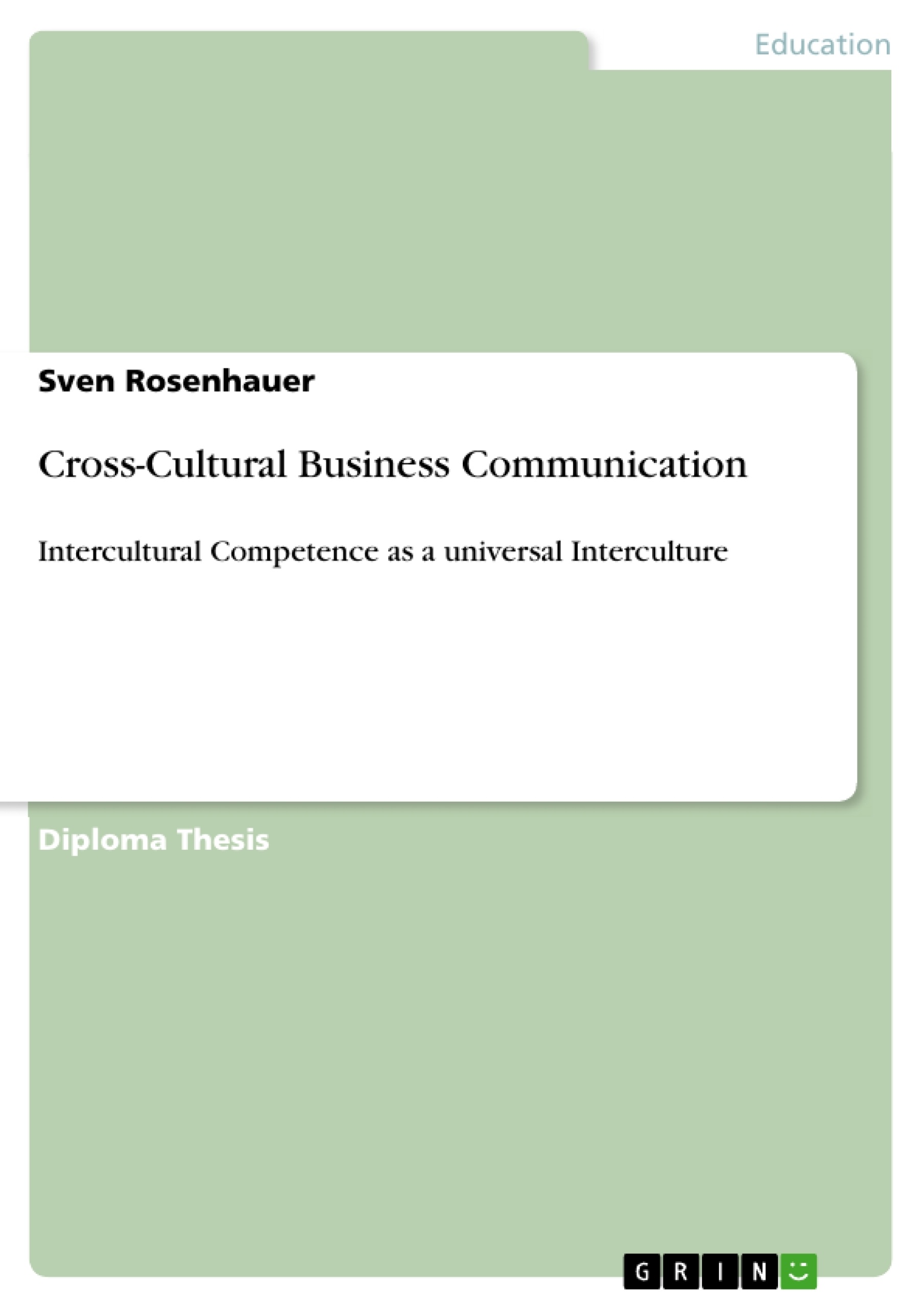The purpose of the present thesis is to examine if and to which extent cultures converge in an international business environment and if intercultural competence has a bearing on it. Therefore, theoretical and practical insights in the subject of culture, its implicit and explicit differences, as well as its measurements will be provided. Due to the fact that communication - as a major cultural attribute - is the most obvious level on which cultural differences are recognized, insights in the topic of cross-cultural and intercultural communication will be given. A thorough discussion of the concept of culture and communication is beyond the scope of this paper, but in what follows, an adequate overview of recognized and well-known researchers’ theories and findings will be provided. Besides giving theoretical background knowledge, it will be examined whether the internationally defined soft skills of intercultural competence can be seen as an approach towards a universal interculture, likewise a universal communication. The topic of the present thesis will be illustrated by a case study, as well as researched and evaluated by a field study conducted at one of the most culturally diverse organization - the United Nations. Findings should only expose tendencies to confirm or disprove previous research findings in the field of cross-cultural comparative research and intercultural communication. It is not intended to present new empirical findings.
Table of Contents
- 1 Introduction
- 1.1 Purpose of the Present Thesis
- 1.2 Structure of the Present Thesis
- 2 Case Study
- 3 Culture and its Implications
- 3.1 Definition of Culture
- 3.2 Cross-Cultural Comparative Research Theories
- 3.3 Cross-Cultural Comparative Research Studies
- 3.3.1 Hofstede
- 3.3.2 Trompenaar & Hampden-Turner
- 3.3.3 Lane, DiStefano & Maznevski
- 3.3.4 The GLOBE Research Project
- 3.4 The Cultural Orientation Framework
- 4 Communication and its Implications
- 4.1 Definition of Communication
- 4.2 Concepts of Communication
- 4.3 Levels of Communication
- 4.3.1 Verbal Communication
- 4.3.2 Non-verbal Communication
- 4.4 Cultural Dimensions and Communication Patterns
- 5 Hypotheses
- 6 Research Methodology
- 6.1 Research Approach
- 6.2 Research Design
- 6.2.1 Research Sample Selection
- 6.2.2 Research Data Collection
- 6.3 Strengths and Limitations of Research Methodology
- 7 Analysis
- 7.1 Analysis 1 - Acculturation
- 7.1.1 Theoretical Background
- 7.1.2 Evaluation of Empirical Findings
- 7.1.3 Conclusion
- 7.2 Analysis 2 - Convergence in Communication
- 7.2.1 Theoretical Background
- 7.2.2 Evaluation of Empirical Findings
- 7.2.3 Conclusion
- 7.3 Analysis 3 - Intercultural Competence
- 7.3.1 Theoretical Background
- 7.3.2 Evaluation of Empirical Findings
- 7.3.3 Conclusion
- 7.4 Conclusion and Discussion of Analysis
- 7.1 Analysis 1 - Acculturation
Objectives and Key Themes
This thesis examines the convergence of cultures in international business and the role of intercultural competence in this process. It explores theoretical and practical aspects of culture, its differences, and its measurement, focusing on communication as a key area where cultural differences are evident. The study investigates whether the soft skills of intercultural competence contribute to the development of a universal business culture and communication style.
- Cultural convergence in international business environments.
- The impact of intercultural competence on communication and business interactions.
- The potential emergence of a universal business culture and communication style.
- Analysis of existing cross-cultural communication theories and research.
- Case study examination of a culturally diverse organization.
Chapter Summaries
Chapter 1: Introduction introduces the topic, highlighting the increasing globalization of business and the growing demand for intercultural competence. It outlines the thesis's objective and structure.
Chapter 2: Case Study presents a case study of the United Nations, illustrating a global workplace with cultural diversity and its associated challenges and influences.
Chapter 3: Culture and its Implications delves into the definition of culture, exploring relevant cross-cultural comparative research theories and studies (Hofstede, Trompenaar & Hampden-Turner, Lane, DiStefano & Maznevski, and the GLOBE project) and a cultural orientation framework.
Chapter 4: Communication and its Implications examines the definition and concepts of communication, including verbal and nonverbal aspects, and their relationship to cultural dimensions and communication patterns.
Chapter 5: Hypotheses presents the hypotheses that will guide the research.
Chapter 6: Research Methodology details the research approach, design, sample selection, data collection methods, and limitations.
Chapter 7: Analysis (Partial): This chapter presents analyses of acculturation, convergence in communication, and intercultural competence, including theoretical backgrounds and evaluations of empirical findings (excluding conclusions and final discussion).
Keywords
Intercultural competence, cross-cultural communication, cultural convergence, global business, universal interculture, international workforce, communication patterns, cultural dimensions, case study, United Nations.
- Quote paper
- Sven Rosenhauer (Author), 2007, Cross-Cultural Business Communication, Munich, GRIN Verlag, https://www.grin.com/document/119450




